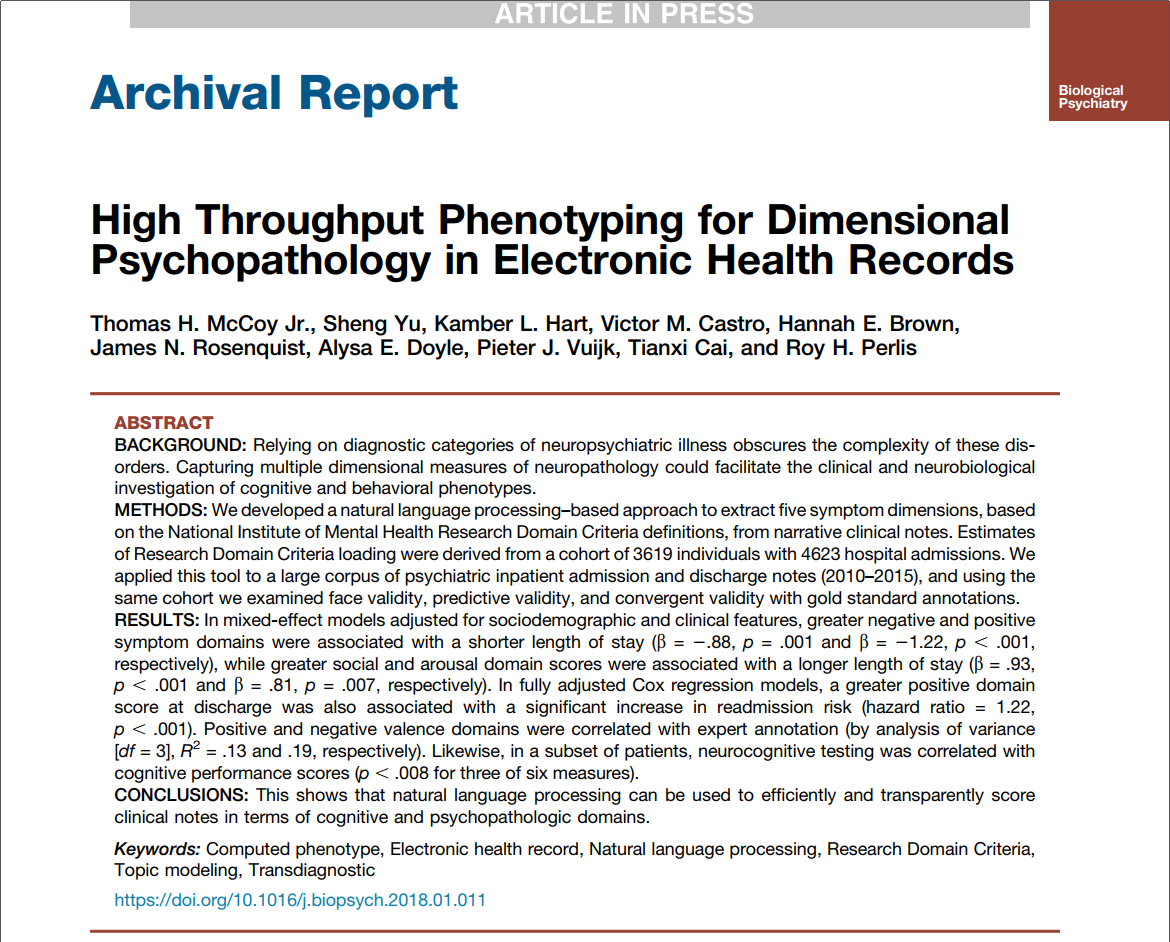2月26日科技出版巨头Elsevier发布新闻公报,介绍了清华大学统计学研究中心俞声教授与美国麻省总医院Thomas McCoy博士共同第一作者在精神病理学顶刊Biological Psychiatry(影响因子11.412)发表的研究成果。公报被Science Daily等国外多家科技新闻媒体转载。 (https://www.elsevier.com/about/press-releases/research-and-journals/new-method-extracts-valuable-information-on-psychiatric-symptoms-from-electronic-health-records)
目前,精神疾病学家普遍认为作为精神疾病分类标准的Diagnostic and Statistical Manual of Mental Disorders已不具有足够的科学性。如抑郁症等一些诊断分类其实包含着很多不同的表现类型,而一些被分为不同诊断的疾病则很可能是同一潜在病理的不同表现。哈佛大学Isaac Kohane教授和麻省总医院Roy Perlis教授共同领导的N-GRID(Neuropsychiatric Genome-scale and RDoC-Individualized Domains)项目旨在通过临床表型大数据与基因组学大数据相结合,更科学地重新定义精神疾病的分类。
在本次研究中,俞声教授综合利用潜在语义分析、大规模相关性多重检验和正则化回归等统计技术,通过对电子病历文本的大数据分析,将精神病患者的表现投射到美国国家精神卫生学会(NIMH)提出的5个描述纬度上(Negative Valence、Positive Valence、Cognitive、Social Processes、Arousal/Regulatory),形成了患者表现的低维空间表示,为分析与区分患者表现奠定了量化基础。[1] 进一步的全基因组关联分析揭示了这些纬度与多个基因位点的相关性,为精神病理分类提供了科学依据。[2] 目前全球约有4.5亿人患有不同程度的精神与行为障碍,中国有超过1亿人患有精神类疾病。精准医学与大数据技术的发展有望使精神疾病的预防与控制得到改善。
参考文献
[1] Thomas H. McCoy, Sheng Yu, Kamber L. Hart, Victor M. Castro, Hannah E. Brown, James N. Rosenquist, Alysa E. Doyle, Pieter J. Vuijk, Tianxi Cai, and Roy H. Perlis. High Throughput Phenotyping for Dimensional Psychopathology in Electronic Health Records. Biol. Psychiatry (2018). DOI:https://doi.org/10.1016/j.biopsych.2018.01.011 [2] Thomas H. McCoy, Victor M. Castro, Kamber L. Hart, Amelia M. Pellegrini, Sheng Yu, Tianxi Cai, and Roy H. Perlis. Genome-wide Association Study of Dimensional Psychopathology Using Electronic Health Records. Biol. Psychiatry (2018). DOI:https://doi.org/10.1016/j.biopsych.2017.12.004

